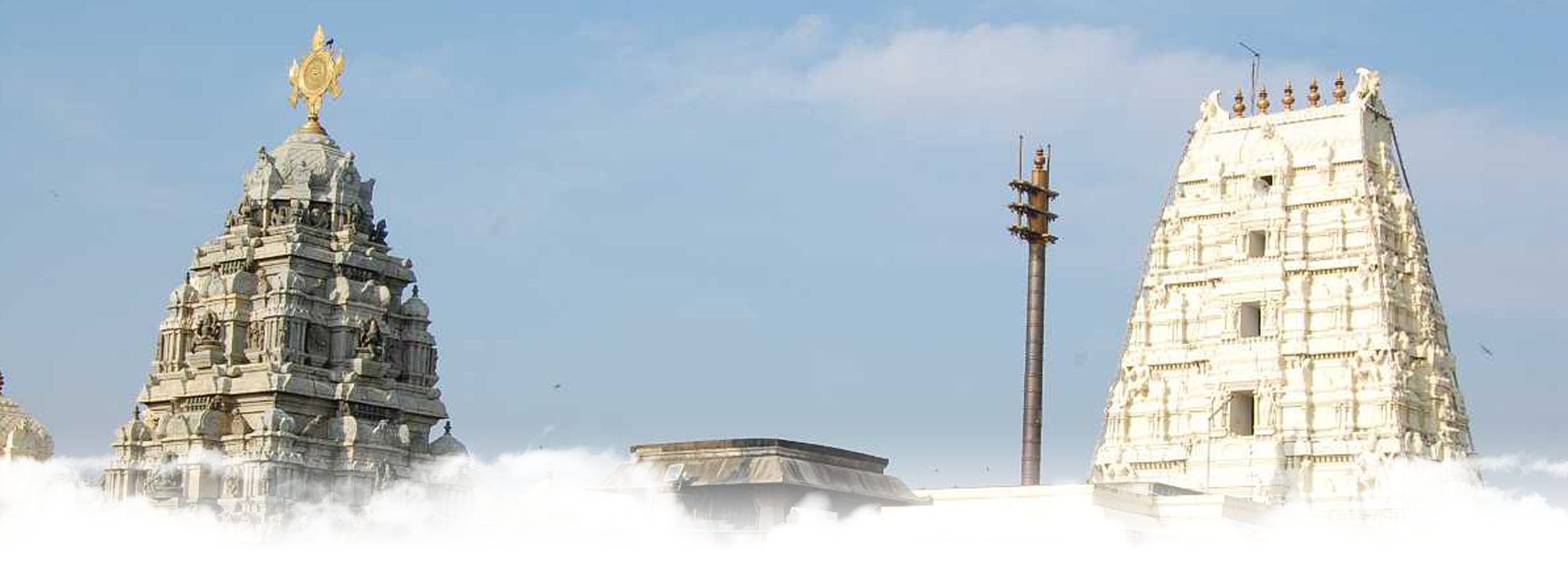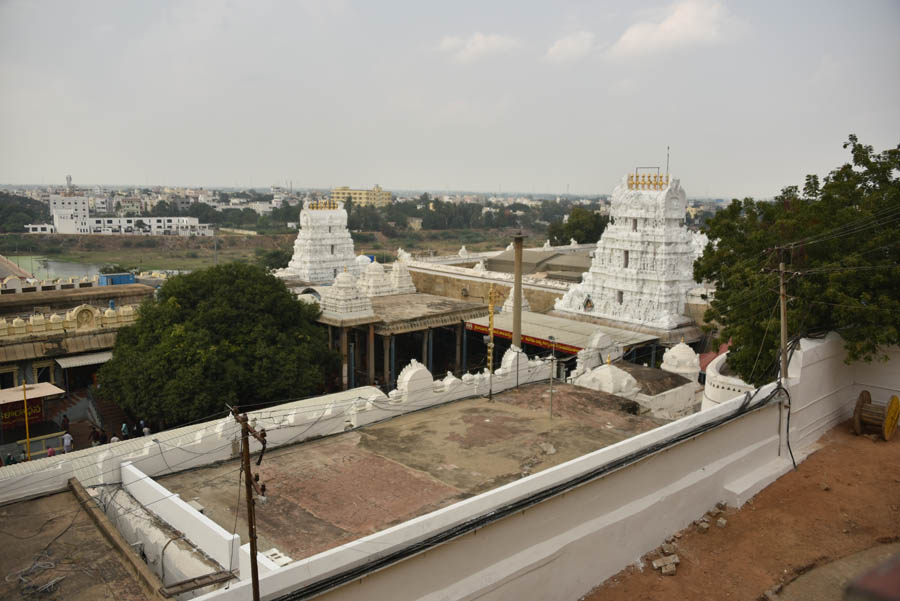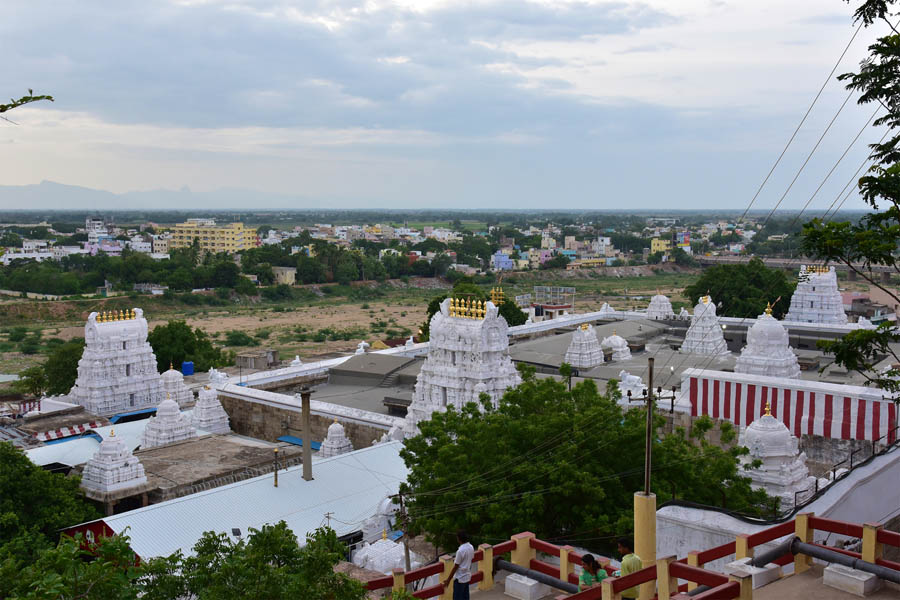
Pancha Bhuta Sthalams in South India: Sri Kalahasti
South India is cherished with several majestic and beautiful monuments, from mighty forts to the divine temples, from pillars to the stone carvings. All these monuments have a unique significance in their history, built, architecture, and their story.
The south Indian architecture is a great example of ancient architecture throughout history. From Dravidian style to the Vijayanagara architecture, there are several majestic temples to visit here.
Temples like Venkateswara Temple, Meenakshi Temple, Viruaksha Temple, etc. are a few examples from the plethora of temples here. The Srikalahasti Temple is a holy place that has a great history, and it seems that it has been there since the beginning of the century.
About Srikalahasti Temple
This holy place is situated in the Chittoor district of Andhra Pradesh. Srikalahasti is a temple, which is famous among the devotees that visit this sacred place. This temple is dedicated to Lord Shiva, who is a Hindu God with immense religious significance.
The temple was built in the year 1516 by “Krishnadevraya,” who is the king of the Vijayanagara Empire. This temple has a great architecture that can take a breath away with its incredible design right from the beginning.
The temple includes several intricate stone carvings of numerous mythological stories, which can be explored in the divine atmosphere. This holy place is mostly referred to as the Kashi and Kailasa of the south.
The temple’s architecture is constructed in a particular way that it signifies one of the five elements, Air or Vaayu. There is a profusion of divine and positive energy in the air over there. This place attracts visitors from all across the world with its fascinating beauty and architecture.
South India includes several popular temples for their design and architecture, but the Srikalahasti Temple stands out from all the holy places located there. The designing of the temple is considered as the highly ornamented gopurams with beautifully carved interiors. This sacred place is like a treasure for those who love exploring and studying South Indian culture and architecture.

Srikalahasti Temple History
The Srikalahasti’s Temple name is derived from a popular story. The story says that a Sri (spider), a Kala (snake), and an Hasti (elephant) used to worship Lord Shiva in this particular town to attain Moksha (Peace.)
So, in the Pallava period during the 5th century, the temple was constructed by the Vijayanagara Empire king, Krishnadevraya.
The Chola Kingdom brought several changes in the architecture of this particular temple during the 11th century. This holy place was then further developed by adding new monuments, expanding the temple corridors, renovations, etc. during the reign of the Vijayanagara Dynasty as well as the Chola Kingdom in the 16th century.
A Tamil poet “Nakkeerar” has mentioned the Srikalahasti Temple several times in his writings, which proved the temple’s existence during the Tamil Sangam Dynasty. Another famous Telegu poet, “Dhoorjati,” wrote several things about this holy place, praising its incredible beauty.
Srikalahasti Temple Architecture
The temple is constructed using the beautiful Dravidian style of architecture. It was built in the 5th century during the Pallava period. This incredible holy temple offers a fantastic view for the visitors, as it is located at a hill’s base. Several folks believe that it is a monolithic structure, which means the entire temple is made out of a single large stone block.
The front entrance of the Temple faces the south, and the shrine faces in the west direction. The Lord Shiva Lingam locate inside the shrine is constructed using the white stone and is made in the shape of an elephant’s trunk.
The principle height of the temple is approximately one hundred and twenty feet. The temple corridor includes a mandap, which has hundred beautifully carved pillars that were built during the Vijayanagara Dynasty in 1516. Also, there is nine feet tall shrine, which is dedicated to Lord Ganesha, son of Lord Shiva.
The temple also includes shrines for other Gods like Sad Ganpathi, Annapurna, Subramanya, Suryanarayan, Kasi Viswanatha, and Jnana Prasanna Mmba. All of these shrines are adorned with the pictures of Ganapati, Sahasra Lingeshwara, Vallabha Ganapati, and Mahalakshmi Ganapati.
The temple corridors also include two more mandaps, the Jalkoti Mandap and the Sadyogi Mandap. It also includes two water bodies, the Chandra Pushkarani and the Surya Pushkarani.
Significance of the Srikalahasti Temple
The Srikalahasti temple is considered as one of the Pancha Bhuta Sthalams, where the presiding God is worshiped as Vaayu Lingam or Air. This holy place is considered as the Kailasa and Kashi of the South. The name of the temple is used several times in the songs sung by the first century’s saints.
All the other temples in that region are shut down during the Lunar and the Solar eclipse, except for the Srikalahasti temple, as it is the only temple that remains open during those days in India. The Rahu-kethu pooja is the specific event done here, and the temple is popular for that.
Several folks believe that if anyone performs this worshipping, it will protect them from the astrological effects of Rahu and Kethu.
According to a story, Brahma had worshipped Kalahatiswara at this particular place during all four Yugas. It is also believed that Arjuna, the Pandava prince during the Mahabharata, has prayed the presiding God sitting in this temple.
Kannappa, the hunter who turned into a devotee of Lord Shiva accidentally, is another story associated with the temple. The Temple is considered as a Paandal Petra Sthalam, as it is revered and respected in Tevaram. It is one of those temples that are mentioned in the Savia canon.

Some Interesting Facts about the Srikalahasti Temple
Another famous story states that once Goddess Parvati was cursed by Lord Shiva, and was made to abandon her divine state and reform into an ordinary human being. Then, Goddess Parvati worshipped for many years at Srikalahasti Temple to free herself from the curse given to her.
Lord Shiva was enormously pleased with her dedication and devotion, and he broke the curse and recreated Goddess Parvati in a divine avatar. The avatar came to be known as Shiva-Gnanam Gnana Prasunamba or Gnana Prasunambika Devi.
Another popular story, Kannappa, is one of those 63 saints who devoted their lives to Lord Shiva. Kannappa willingly offered his eyes to stop the blood flowing through Lord Shiva’s Lingam.
When Lord Shiva came to know about this, he immediately stopped him from doing that and granted his release from the never-ending cycle of birth and death.
Some folks believe that Ghanakala was cursed to take the form of a ghostly spirit. He offered his devotion for 15 years and chanted the Bhairava Mantra in order to please Lord Shiva. When Lord Shiva was delighted with his dedication and commitment, he restored him to his previous form.
Legends Associated with Srikalahasti Temple
At this holy place, it is believed that Lord Shiva has given liberation to a spider, serpent, and an elephant who were great followers of Lord Shiva Lingam located at this particular place. In the Kritayuga, which is the first of the four Yugas of Hindu religion, the spider got to have salvation, while the elephant and the snake, who were the followers of Lord Shiva in the Trata Yugaam got salvation in that era.
It is also believed that the elephant’s devotional chanting was a troubling thing for the devotional chanting of the serpent and vice versa because they both got into extreme hatred with each other. Lord Shiva ended it by liberating the two of them.
Srikalahasti Temple Festival Celebrations
Accommodation and Access
Tirupati airport is the nearest airport to the Srikalahasti Temple, which is around 30 KM from the temple, and also it is one of the most convenient routes. Tirupati also includes several lodging facilities, which makes it even more comfortable for the people.
Srikalahasti Temple is very well connected with Tirupati and Chennai so that you can have a one day trip from Chennai to the temple. A proper trip planning can help you to cover Sralahasti temple, Tirumala, and Tirupati in a one-day trip from Chennai by road.
Conclusion
Srikalahasti Temple is a popular temple where Lord Shiva is worshipped. There are several different facts about this holy place, and all of them are interesting. It is great for the visitors that love to explore and study the South Indian culture. The best time to visit this holy place is in the winter season, between November to February. At this time, the weather will be pleasant to explore the entire location.
